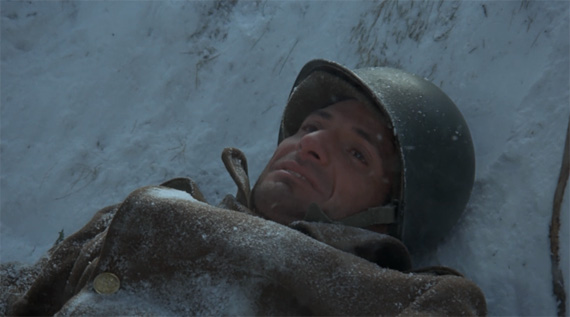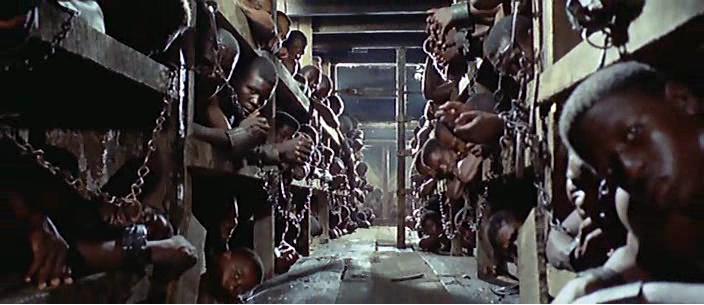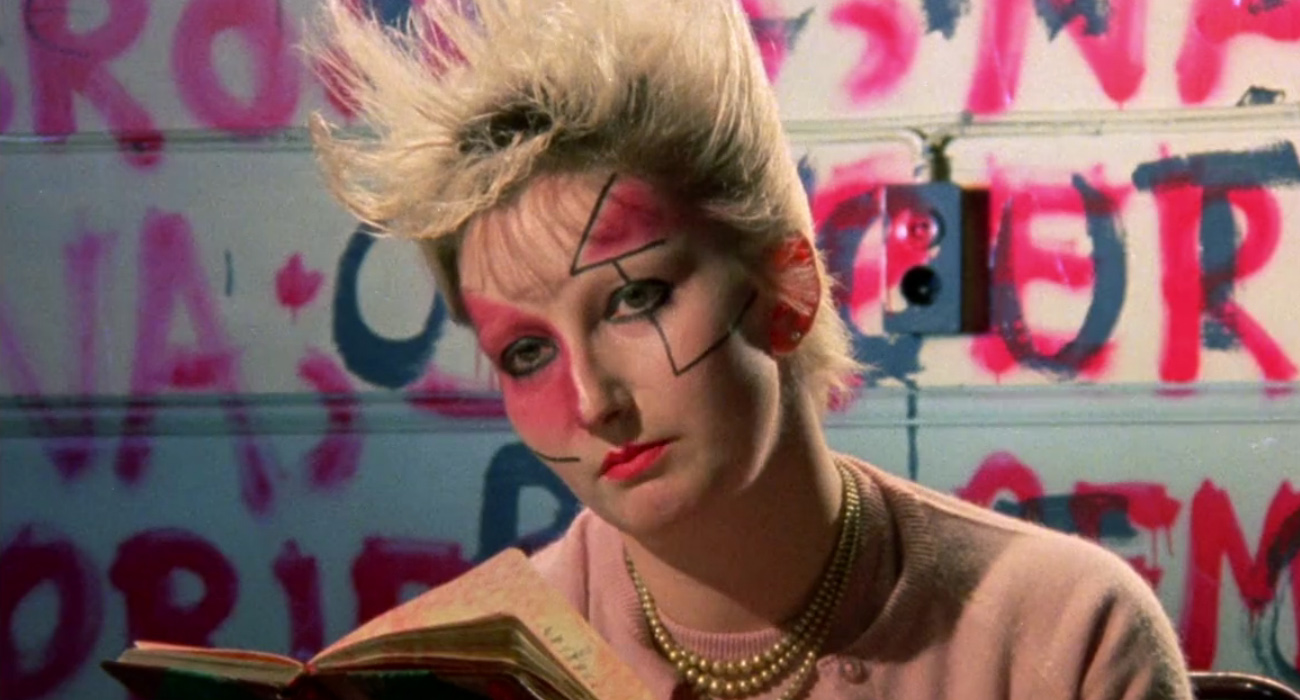
Time travel. Cue the ‘ooohs’ and ‘ahhhs’. Go backward and see history, correct a mistake, right a wrong. Go forward and see what becomes of you, someone you love, the world we inhabit. As legitimate scientific theory, time travel stands on shaky ground. As a storytelling device, it has inspired some artists to explore the human condition in profound ways, and others to build thrill rides that wow more than enlighten. Both approaches have resulted in some terrific art.
Film and time travel seem natural bedfellows. With a single cut, an editor pushes us forward or backward in time and space. The great Andrei Tarkovsky called filmmaking ‘Sculpting in Time’, and one can see what he means. Despite popular memory of the genre being dominated by high-concept spectacles like BACK TO THE FUTURE and THE TERMINATOR, many talented filmmakers have explored the idea in deeper extremes (if at the expense of less commercial appeal), and others have used it as a springboard to delve into other themes.
The following is a list of ten films that fall into those latter, less commercial categories:
10. Slaughterhouse-Five (1972)

Method of Time Travel: Billy Pilgrim has come unstuck in time.
Kurt Vonnegut’s SLAUGHTERHOUSE-FIVE is one of the most atypical yet definitive time travel stories ever written. An extraordinarily complex work told through Vonnegut’s simple syntax, it relates the story of how a passive everyman named Billy Pilgrim becomes ‘unstuck in time’ and begins to live (and relive) his life in a random order.
When one reads the novel, the idea of a film adaptation is the furthest thing from your mind – really, how?! – but, director George Roy Hill and screenwriter Stephen Geller gave it a go in 1972, and produced a curious film that didn’t make the cash flow but gave the critics and those open to its mysteries plenty to think about. It also pleased the hell out of Vonnegut himself.
Rather than attempt a complete adaptation of the book, Hill decided to offer an interpretation, and centered on the aspects of the story which best lent themselves to cinema – namely, how the idea of being ‘unstuck in time’ would give humans something of an answer to the bigger questions that plague us all: what does it all mean? Why are we here?
Tarkovsky’s aforementioned ‘sculpting in time’ allows the seamless jumping of Billy (wonderfully played in the film by Michael Sacks) through random points in his life, and the nature of editing allows for a juxtaposition of meaning that is seemingly impossible for the human mind to do on its own. In a way, Hill’s film could also be read as a celebration of cinema and how its language allows people to view events and occurrences in ways that provide new meaning.
We see Billy’s random life episodes during the progression of the film — Billy’s World War II experiences that culminate with the Dresden firebombing, beginning his seemingly dissociative trek through time, his subsequent PTSD, his unremarkable life as an optometrist and family man – Hill stages and shoots these scenes in a way that suggests that we always dwell in a prison of one form or another.
The cinematography and production design reinforces this; everything is designed and shot in heavy contrast and drab colors, and there is much symbolism regarding oppression and restriction of humanity through such weight (including a famous scene near the end of the picture where Billy is pinned down by a large grandfather clock).
Of course, both the book and the film suggest that the ability to see life as a whole, removed from the inherent limitations of perception that humans have, would promote fatalism as the only true philosophy. This is echoed by the Tralfamadorians, a fourth dimension-dwelling alien race who kidnap Billy for means of study.
The Tralfamadorians view time all at once, as a complete object, and state that what is just is, and what will be will always be. In their experience, humans are the only beings who believe in this ‘free will’ rubbish. The notion of being locked into a prison of fate gives Billy a newfound freedom and sense of complacency. So, when he comes to his death, which he has experienced several times over, he accepts it with a knowing, ironic smile. If time exists all at once, though he is dead here, he is still very much alive back there.
So it goes. Poo-Tee-Weet.
9. The Infinite Man (2014)

Method of Time Travel: Two black rubber helmets that connect to an ATAPI/IDE CD-ROM drive.
The lead character of THE INFINITE MAN is something like a reverse hard-boiled egg; he has a bouncy and droll exterior, but when you press upon him, you can feel an unexpected firmness underneath. Bite into the softness, and you’ll reveal a hard shell with a slight crack – a crack that continues to expand the more you look at it, threatening to burst into a teary mush at any given second.
A terrific Josh McConville plays Dean, an unassuming scientist who is obsessed with giving his girlfriend the perfect weekend. Dean’s fixation on perfection permeates all aspects of his life, and he has a deep-seated hatred of himself that makes him feel unlovable. Having made it this far in a relationship with the beautiful Lana (Hannah Marshall), he meticulously maps out how the entire weekend should go, all because he seeks to please Lana down to precise neurological satisfaction.
From the beginning, nothing goes as expected. It seems a man of Dean’s genius has too much mental capacity forced into narrow chambers, and there are certain simple matters – like making sure the hotel they plan to stay at is open – that escape his mind. When Lana’s old boyfriend suddenly arrives on the scene and brazenly destroys any hope for the perfect weekend, Dean channels his frustration into completing a time machine that allows him and Lana to return to the beginning of the weekend and manipulate the past into perfection. You can probably guess if it goes as planned.
THE INFINITE MAN is a solid first feature from Australian director Hugh Sullivan. Knowing that having strong actors and a tight, compelling script would give him the most mileage out of a low budget, he gives a well-rounded exploration of humans’ obsession with perfection and how achieving it would render the nature of humanity obsolete. Sullivan studied the traits of genius well; Dean is a character who is so inadvertently self-absorbed and one-sided that it requires a fragmentation of time for him to see the big picture.
Though we like to romanticize our heroes, the truth is that those who contribute the most to humanity tend to be at least somewhat off-kilter. You have to have a significant dissatisfaction with our reality (and the genius to know how to permanently alter it) to be driven to create something like a time machine, and it’s for these reasons that Dean is such an interesting character and the resulting escapades are so involving.
The movie does twist and loop around quite a bit, and most wouldn’t be able to sort it all out in one sitting – but, that’s okay. Movies should be rewatched. They’re art, and this little gem is a wonderful piece.
8. Cleopatra (1970)

Method of Time Travel: Metal containers that project the inhabitant’s soul into a body in the past.
How’s this for an invasion plot: a group of aliens assume the appearance of attractive men and women, then marry us, fuck us, kill us? (The sequencing of the first two may vary.) This is the definition of the ‘Cleopatra Plan’ — but, at the beginning of this tripped-out film, humanity has no idea what a ‘Cleopatra Plan’ might be. We just know that some pissed off aliens stand poised to strike, and their plan of attack is named as such. What are we to do?
Consult a history text? No. View the infamous 1963 Joseph L. Mankiewicz film? Nah. Google it? No — this film was made in the 1970s. Get down with some covert ‘G.I. Joe in space’ action? Not really, but that would be the closest guess. The plan is to use ‘the latest technology’ to project the souls of some live-action scientists with wobbly animated heads (?!) back through time into the bodies of people who lived during the Cleopatra era. Here, through observation and participation, they can discern exactly what a ‘Cleopatra Plan’ might be.
Such logic is par for the course in the bonkers CLEOPATRA, the second in Osamu Tezuka and Eiichi Yamamoto’s informal Animerama trilogy. The idea behind these films was to present an animated counterpart to the ‘pink film’ genre, which was catching fire in Japan.
The first film in the series, A THOUSAND AND ONE NIGHTS, achieved a great deal of success, allowing Tezuka and Yamamoto to really open the flood gates and turn CLEOPATRA into a psychedelic celebration of the form while still supplying the requisite ink-and-paint T&A.
This is a film where they throw everything at the screen and see what sticks; you have a sequence where a sensual intertwining of black lines against a white background represents lovemaking.
You have steamy, erotic sex scenes in pastel-painted baths. You have eye-popping slapstick comedy. You have Julius Caesar with green skin. You have an appearance by Astro Boy. You have Cleopatra being a homely Egyptian who volunteers for an alchemical process that turns her into a ravishing beauty. You have a general disregard for any sort of historical accuracy. You have an ending where, after returning to their own time and realizing what the ‘Cleopatra Plan’ is, humanity seems… to do nothing at all about it.
CLEOPATRA was not the success A THOUSAND… was, and Tezuka left to pursue other projects while Yamamoto completed BELLADONNA OF SADNESS on his own. (One can only imagine what Tezuka would have contributed there.) It can be a difficult film to find, but well worth your time if you are a fan of true midnight movies.
7. Goodbye Uncle Tom [Addio Zio Tom] (1971)

Method of Time Travel: A helicopter that flies from then present day 1971 to the Antebellum south.
GOODBYE UNCLE TOM is one of a kind. It’s understandable if you turn it off a third of the way through. It’s understandable if you watch the whole thing but feel foul and angry afterwards. It’s understandable if you watch it and shout “what the hell does this have to do with time travel?!”
Short answer is: a little, but the little it does deal with stirs the mind a bit more than you’d expect. After a scathing reaction to AFRICA BLOOD AND GUTS [AFRICA ADDIO], which had them widely branded as racists and nearly executed in Tanzania, the filmmaking duo of Gualtiero Jacopetti and Franco Prosperi created GOODBYE UNCLE TOM as sort of a cathartic, vulgar retort against those who misunderstood their intentions.
When released in America, the film was shorn of its pseudo-journalistic presentation and posited as harrowing, crass exploitation. Despite the thinking that such a film would set the box office ablaze during the racially tense early 70s, it ended up being a critical and commercial failure, and this version of the film did very little to sway the widely held opinions of Jacopetti and Prosperi. The duo made one more film together, 1975’s MONDO CANDIDO, before going their separate ways.
For GOODBYE UNCLE TOM, Jacopetti and Prosperi use a flimsy time travel framework of modern documentary filmmakers hopping onto a regular helicopter and flying to the Antebellum south of the past, with the intention of getting a ‘you are there’ perspective on how things really were. Slave owners are interviewed. Plantation owners give guided tours. Slaves seem unfazed by this baffling technology before them. Not that they would have much time to analyze and think, anyway – these poor human beings are degraded and rendered as subhuman in the most casual yet disgusting way possible. They are cattle.
Despite Jacopetti and Prosperi’s intention of depicting only what has been recorded in published documents, the American version of the film has a hard time distinguishing itself as anything other than money-grubbing exploitation — money-grubbing exploitation that is shot remarkably well. When backed with Riz Ortolani’s insane, march-heavy score, the movie’s wrong-headedness seems to turn the whole picture into a ghastly freak show. The idea of taking this as anything else quickly vanishes.
The time travel framework inspires some interesting thought. Suppose humans were to use time travel responsibly and go back to get the final word on historical events first hand – what then? How would humanity be affected? How would it alter our concept of history? How would we react to history now being unquestionable? Similar questions were asked in Michael Moorcock’s 1969 novel BEHOLD THE MAN, about a depressed neurotic who goes back in time to find that Jesus, as we perceive him, never actually existed.
A final note: the Italian version of the film is more in line with the filmmakers’ original intentions – different narration, some of the more sadistic bits trimmed, and new material inserted that makes the film more directly political. You judge which one is better.
6. Jubilee (1978)

Method of time travel: Guidance from the angel Ariel, as summoned by occultist John Dee.
Though the angel Ariel uses a form of time travel to guide Queen Elizabeth I through a tour of her shattered, future England, JUBILEE’s more compelling relationship with time comes from its role as a sociological time capsule.
Created smack-dab in the middle of the nihilistic punk movement, the near-plotless, scrapbook nature of JUBILEE, seen 30 years hence, offers a hindsight view of posturing and attitudes that really haven’t gone away – they’ve just gotten new clothes, new sayings, new music – new modes of attack. As a result, humanity has gotten better at dismissing and tuning them out. “As long as the music’s loud enough, we won’t hear the world falling apart.”
Director Derek Jarman, a former painter who cut his filmmaking teeth doing production design on films like Ken Russell’s THE DEVILS, brings a colorful yet grimy aesthetic to the film that disguises its low budget. His story, such as it is, is little more than a framework to hang various scenes and set pieces, each of increasing shock value and vulgarity. One gets the impression that Jarman is just presenting things as they are, and the tiring nature of such repetition makes one feel the annoyance and blackness at the heart of the nihilistic characters.
Thinking that you have no future can be a distressing thing, and humanity tends to deal with it in two different ways – sulk and become depressed, or slash tires, light fires, and regress into primal beast mode. JUBILEE is not a film for everyone, but it is a perfect example of a piece of art that can take you on a form of time travel and prod you to use what you see as a critical overlay on your modern life.